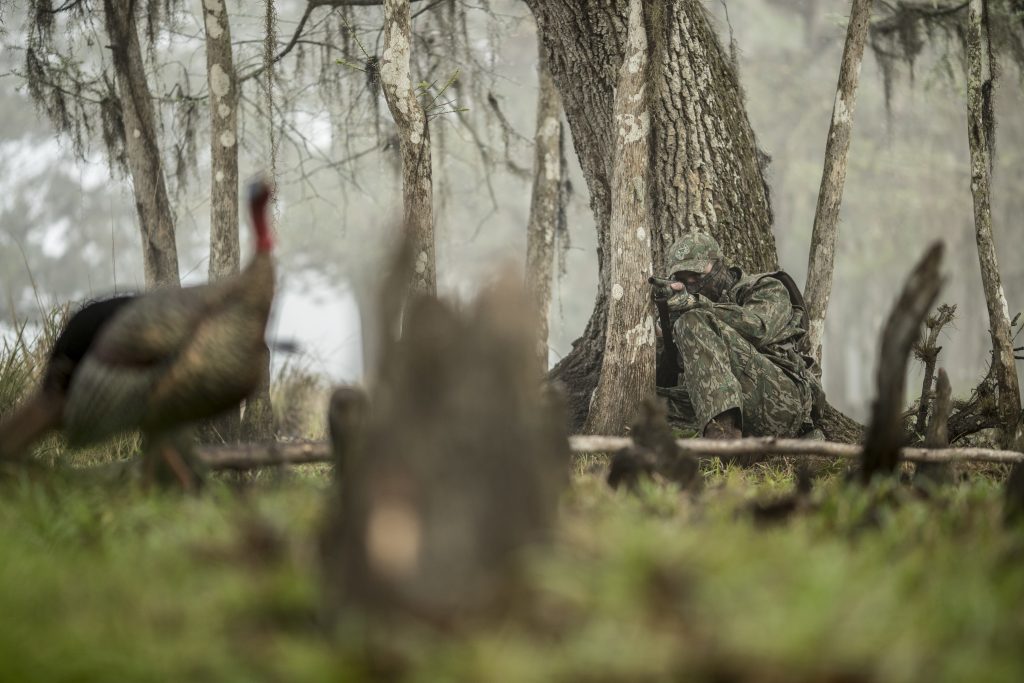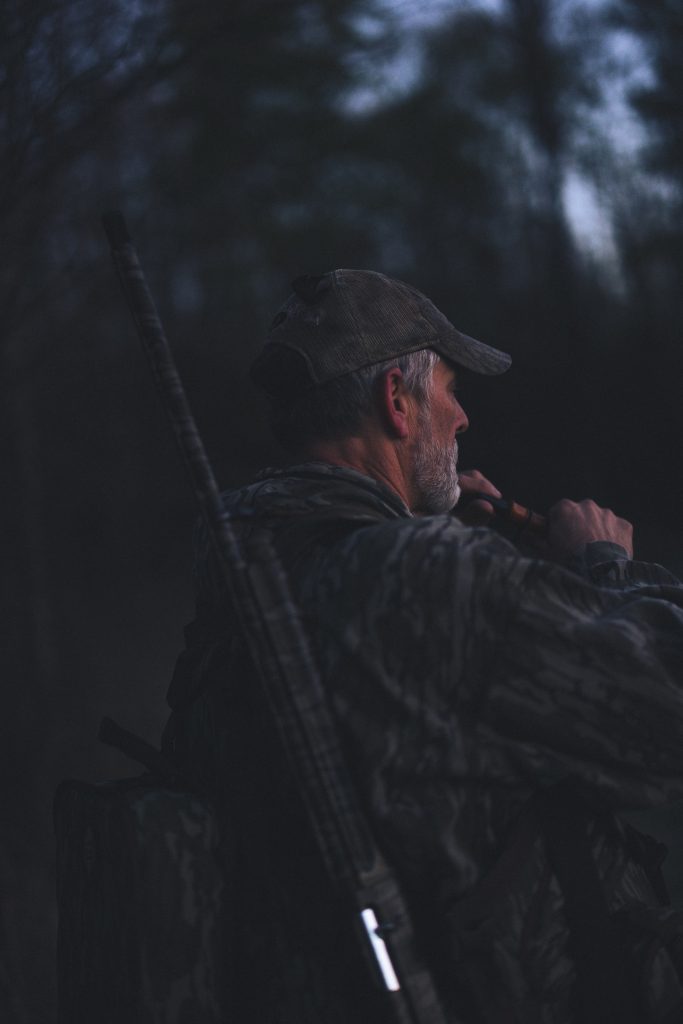Close Counts: Getting Tight With Turkeys
Good woodsmanship can put you up close and personal with gobblers — and that’s important. Here’s how to slip close this spring.
As modern technology makes turkey hunting easier, some fundamentals might have faded a bit. But before pop-up blinds and ultra-realistic decoys, your granddaddy and his buddies held this as gospel, and it’s still true: Getting close to turkeys — whether they’re on the limb or the ground — greatly increases your chances of success.
Of course, any hunter who’s tried to sneak tight to a turkey knows it’s not easy. If the bird sees your movement, it will flee. And if you’re not extremely careful and skilled, the odds of a sharp-eyed turkey busting you are almost 100%.
Don’t let the degree of difficulty discourage you, though. Getting tight with turkeys is an essential old-school skill, and you can master the art through careful planning and practice.
Why It’s Important
First, let’s be clear: This isn’t about crawling up on a turkey and bushwhacking it. That’s another topic. This also doesn’t involve fanning, which, again, is a separate issue. This article covers the skills required to position or reposition as close as possible to turkeys so you’re in the best possible position to call them in or intercept them. Gobblers don’t always run to calling, so you must often use woodsmanship to create opportunities.
Getting close to turkeys pays dividends in many ways. First, it can put you in an excellent ambush position on traveling turkeys or birds assembling right after flydown. Examples might include slipping through thick timber to set up along a logging road where turkeys are feeding, or using a winding creek bed to sneak ahead of a band of roaming Merriam’s.
Moving tight to turkeys can also put you within a turkey’s imaginary circle of trust — the immediate area around the bird where it feels comfortable gobbling or investigating calling. For whatever reason, many gobblers won’t respond to or approach calling that’s outside that bubble, whether it’s 100 or 250 yards away. Perhaps it’s just their mood at the time, or maybe they instinctively judge that the calling is too distant to merit attention. That can change, however, as you get close to a gobbler. A “hen” that yelps 75 steps away will certainly get his attention, and he’s much more likely to check out your calling.
Further, getting tight to birds shortens the distance a turkey must travel to reach your setup, which greatly reduces the chances of something going sideways, such as the longbeard encountering a hen, getting bumped by another hunter or losing interest and shutting up. It’s especially critical with hard-hunted Easterns.
Usually, it’s ideal to move as close as possible to turkeys before calling. In wide-open ag or prairie country, you can sometimes glass turkeys from good vantage points, study the terrain to form a game plan, and then slip into position undetected. In timber or other cover situations, when you must locate birds via sound, listen for birds to reveal themselves by shock-gobbling or gobbling on the roost, and then slip tight before yelping. Obviously, knowing the lay of the land you’re hunting helps immensely with this. In relatively unfamiliar terrain, however, you can use mapping apps to forge a plan.
Sometimes, birds respond to calling but won’t approach, in which case it pays to abandon your initial setup and sneak to a better calling position close to the bird. Again, knowing and using terrain to cut the distance is critical. And of course, it helps if the turkey continues to gobble and reveal its location. It’s often best to use locator calls while relocating. They can prompt shock-gobbles that let you keep tabs on the bird but won’t entice the gobbler to move toward you.

Getting it Done
No secrets here: Slipping close to turkeys requires that you remain unseen and, many times, unheard. Turkeys have no curiosity about predator-like behavior, so the sight of a figure topping a ridge or even a head peeking over a deadfall will spook them. You must be sneaky, agile and quiet — like any predator, really — to get close to turkeys.
As mentioned, using terrain is the easiest way to accomplish this. Ridges, hills, creek bottoms and other natural landscape wrinkles hide your movements and let you cover ground quickly.

It’s unusual, however, that a major terrain feature lets you walk right up to birds. Often, you can gain some ground on a stubborn gobbler or roaming flock by walking in a ditch or under a ridge top. Finishing the job and getting tight with birds often requires that you find smaller terrain features — a small rise in a field, for example — and use them to crawl or slither unseen to a potential setup.
Vegetation can also let you move unseen. Mature timber with a relatively thick understory is usually ideal because thick trees and associated brush limit vision in the woods. You can also sometimes move from tree to tree — again, often via low-level relocation — to gain ground on birds. Brush, CRP grass and other thick cover might also help, but it’s sometimes difficult to navigate thick stuff without creating associated movement or making too much noise. Excessive crunching, thrashing or other suspicious noise can “audio-bump” turkeys that don’t see you.
You can also get surprisingly close to turkeys during darkness. Obviously, this involves slipping tight to roosted birds. That doesn’t mean you intend to shoot one out of a tree. But there’s nothing wrong with being within shooting range of a gobbler when his feet hit the ground.
Be very careful when trying pre-dawn maneuvers. If possible, wait for days with cloud cover or a relatively dark moon. Plan to be in the woods long before light, and don’t even think about using a light. Plot a course to a roost setup during daylight, and then follow it as best as possible in the dark. Go very slowly, and focus on tiptoeing along the wood floor. You’ll make some noise, but turkeys hear deer, raccoons and other noise-making critters every night of their lives. When you reach your setup, sit and be still and quiet. If you pulled it off, you might be right underneath birds as daylight breaks.
Conclusion
Full disclosure: Not every attempt to get tight with turkeys will succeed. Sometimes, one mistake will blow an otherwise great positioning effort. Other days, you might have to halt your approach and set up relatively far from birds, knowing that risking further movement could blow the deal. However, realize that almost any ground you gain on a traveling or gobbling bird puts you a bit closer to success. And on those hunts when you stealthily, skillfully slip right in with them, you can enjoy the feeling of pulling off one of turkey hunting’s greatest maneuvers.
